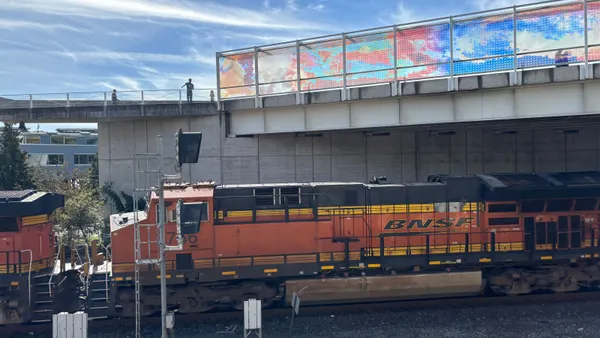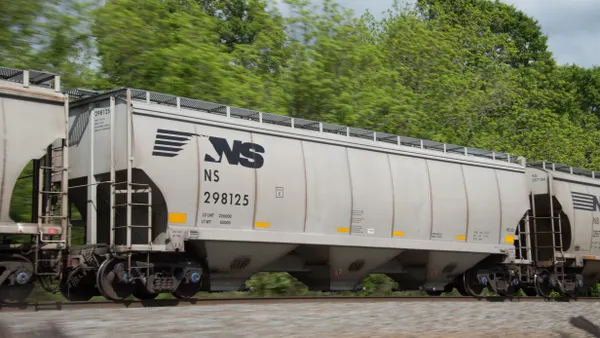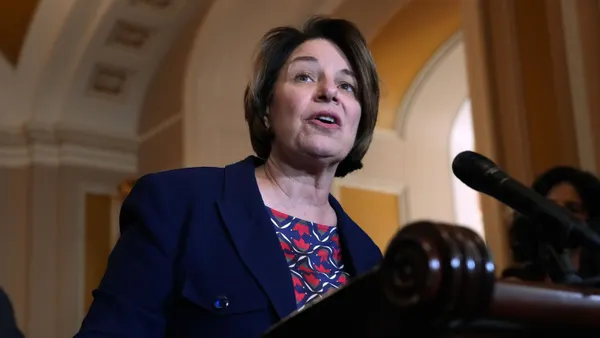Dive Brief:
- Kansas City Southern will complete a "whiteboarding process" this year, taking a fresh look at its yards, especially along the U.S.-Mexico border, as part of its transition to the principles of precision-scheduled railroading (PSR), according to executives on the railroad's second-quarter earnings conference call Friday.
- "As you know an important part of PSR is to create capacity for free," said Sameh Fahmy, executive vice president of PSR for the railroad, explaining that any budget marked for yard upgrades will be held until the review process is complete.
- The railroad's revenue was up 5% for the quarter with volume growth essentially flat. Executives expect volumes to stay flat or come down slightly for the year.
Dive Insight:
Kansas City Southern's second-quarter results offer further proof that PSR principles are, so far, protecting railroad profits from slowing volume.
KCS is essentially just starting its PSR journey — which President and CEO Patrick Ottensmeyer described as "getting out of our own way" — but dwell time and gross velocity improved 11% and 9% year-over-year respectively.
A hallmark of PSR is finding more profitability by doing less — moving the same amount of freight (or more) with less operational effort and so far, things seem to be going according to plan since the railroad posted a 5% revenue bump despite operational cars online decreasing by 17% versus peak 2018 levels for the quarter.
"Our focus has been to reduce high-cost foreign equipment by improving cycle times and working with customers to right-size fleets," said COO Jeff Songer. Train length was up 2% over last year for the quarter.
The savings are piling up even in these early days. CFO Mike Naatz reported operational savings in 2019 will likely exceed expectations by 250%, totaling $40 million. These savings come from nearly every corner of the business from labor, to equipment to fuel and beyond.
But will continued operational streamlining keep revenues steady if a slower economic climate is indeed coming? Ottensmeyer says yes.
"In a flat volume environment the things we're doing should result in further productivity improvements and possibly lower headcount requirements going forward," he said.
This confidence may come in part from the long-distance KCS still has to travel on the PSR track. The railroad's adjusted operating ratio was 63.7% — still a ways from the railroad's 2021 goal of 60-61%.














